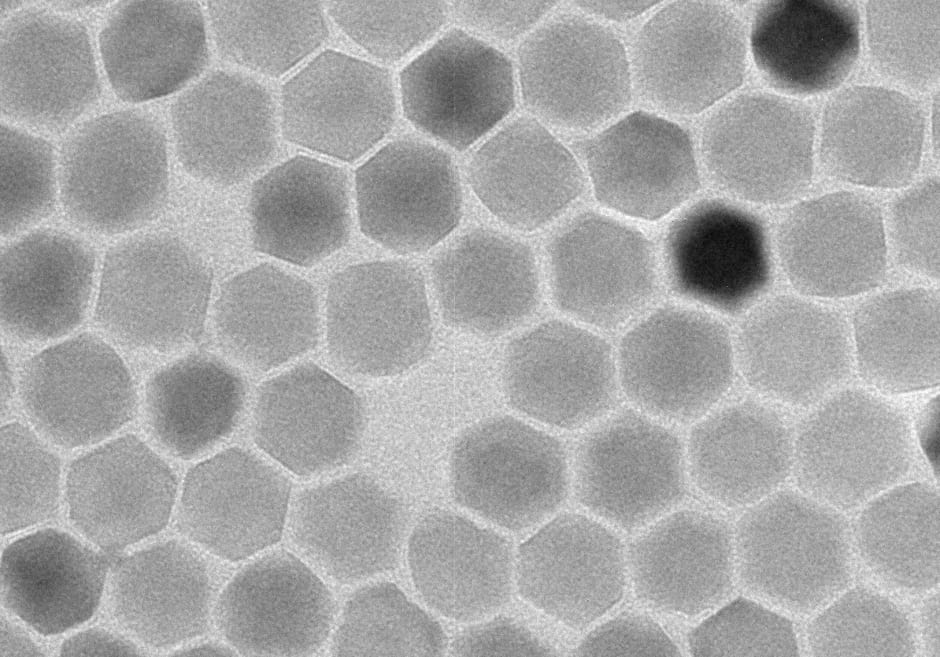
This is the conclusion from new research led by the University at Buffalo (UB), New York, where scientists are developing nanoparticles that can attack tumours with significant amounts of heat under a low magnetic field. The study was published online on June 21 in Small.
“The main accomplishment of our work is the greatly enhanced heating performance of nanoparticles under low-field conditions suitable for clinical applications,” said Hao Zeng, PhD, professor of physics in the UB College of Arts and Sciences, who led the project.” The best heating power we obtained is close to the theoretical limit, greatly surpassing some of the best-performing particles that other research teams have produced.”
He said the therapy has a number of potential benefits over other treatment routes as it is minimally invasive, and is not expected to generate the type of side effects associated with chemotherapy and radiation.
“The treatment will only heat up the region where nanoparticles are without affecting healthy tissues that are further away, so we anticipate few side effects,” Zeng said. “In addition, the magnetic field that’s used to excite the particles can penetrate deep into the body from an instrument that does not require any contact or insertion of probes. As such, the therapy can reach parts of the body that are not easily accessible to surgery.”
The study was a collaboration between UB; Capital Normal University in Beijing, China; the Chinese PLA General Hospital in Beijing; and the University of Nebraska Omaha. Shuli He, PhD, a visiting scholar at UB from Capital Normal University, was first author.
UB cautions that more research needs to be done before the nanoparticles are available to patients. In practise, however, doctors would first use targeting technologies to direct nanoparticles to tumours in patients’ bodies. Exposure to an alternating magnetic field would then prompt the particles’ magnetic orientation to flip back and forth hundreds of thousands of times per second, causing the particles to warm up as they absorbed energy from the electromagnetic field and converting it into thermal energy in the targeted regions.
This form of cancer treatment - magnetic nanoparticle hyperthermia – is not new, but Zeng and colleagues designed new magnetic nanoparticles that get hotter and generate heat a faster than some of the highest-performing magnetic nanoparticles studied under low-field conditions, he said.
“Within the body, heat energy is continuously carried away - for example, by blood flow - making it difficult to reach the required temperature to kill cancer cells,” Zeng said. “One needs particles with the highest heating power possible. Our particles have demonstrated impressive heating power even at low magnetic field amplitude and frequency deemed safe for human body.”
The team said it crafted two types of nanoparticles, each consisting of metal alloys chosen for their ability to generate heat under a magnetic field. One of the new nanoparticles contains manganese cobalt ferrite, while the other is made from zinc ferrite.
The manganese-cobalt-ferrite particles reached maximum heating power under high magnetic fields, but the biocompatible zinc ferrite particles are said to have heated up with impressive efficiency under an ultra-low field.
“The bottom line is our zinc ferrite particles are designed for low fields suitable for clinical applications,” Zeng said. “For other particles reported in the literature, the field used is typically higher. Most of these other particles are not capable of heating at our chosen field parameters.”
Zeng envisions bone cancer treatment as one early application for heated magnetic nanoparticles.
“Typically, after a surgery to remove bone tumours, a synthetic material called bone cement is injected to fill the voids,” he said. “If we introduce our nanoparticles into the bone cement, they can be heated on demand to kill any tumour cells that remain nearby, and help prevent recurrence of the cancer.”
To simulate this scenario, Zeng and colleagues embedded their zinc ferrite nanoparticles into bone cement and used it to heat up a pork rib. With just a small number of nanoparticles – one per cent of the bone cement, by weight - the experimental set-up is said to have reached a temperature high enough to kill tumour cells.




April 1886: the Brunkebergs tunnel
First ever example of a ground source heat pump?